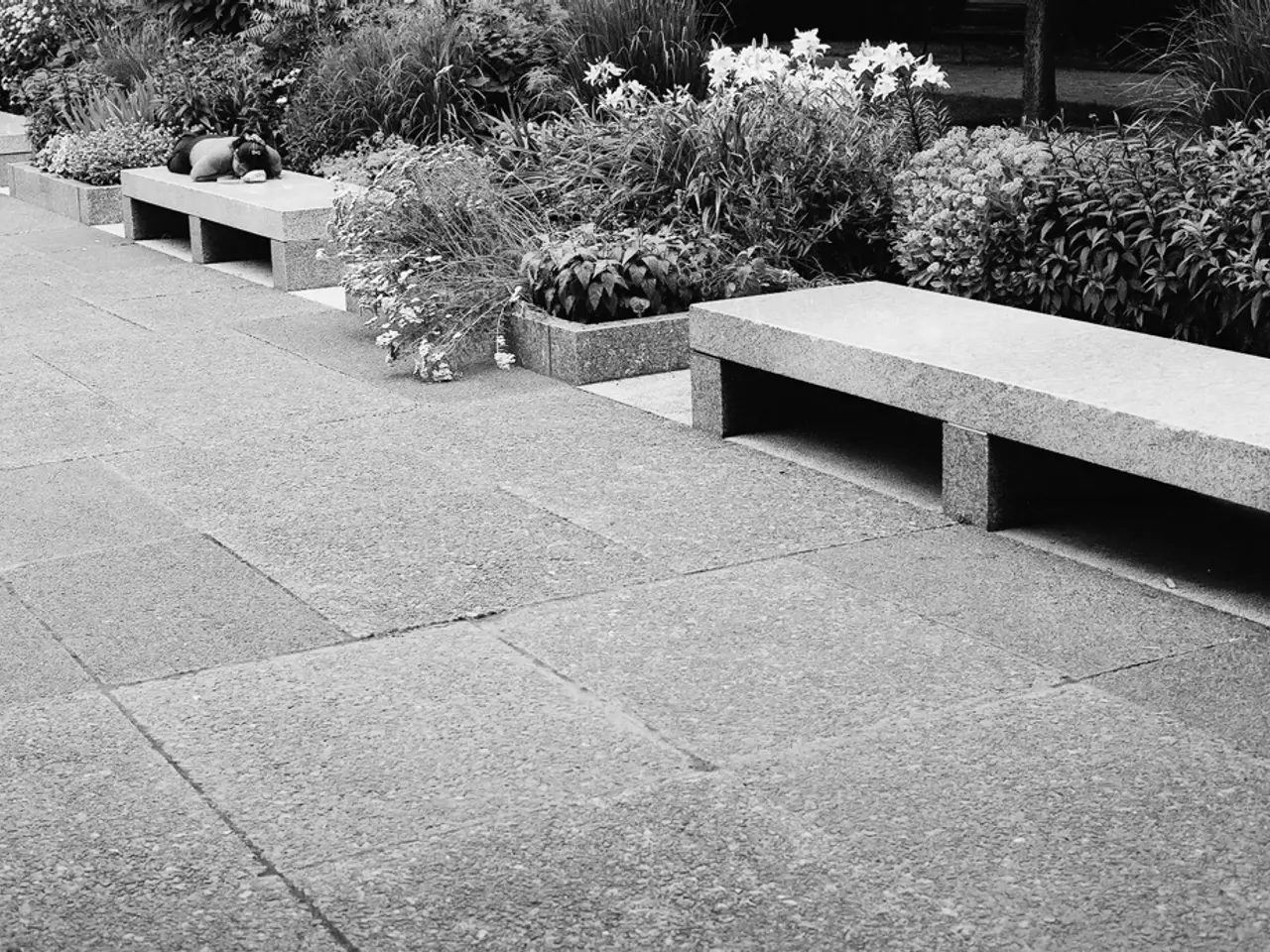Designing Pathways in Elevated Plant Beds - Exploring 4 Tidy, Useful, and Aesthetic Methods to Border, Connect, and Consolidate Your Raised Garden Space
=========================================================================================
In the quest to create a beautiful and functional garden, the choice of pathway material for your raised beds can significantly impact both the aesthetic appeal and practicality of your space. Here's a breakdown of four popular options: wood chips, gravel, slate, and stepping stones, each with their unique benefits and drawbacks.
Wood Chips
Wood chips offer a natural, soft walking surface that improves soil health as they decompose over time. They are an economical choice, especially for perennial beds, raspberries, and blueberries, or even as a standalone walkway. However, wood chips break down relatively quickly, requiring frequent replenishing, and may attract insects or mold if not properly maintained.
Gravel
Gravel is a durable choice that provides excellent drainage and holds up well under foot traffic. It is lower maintenance than organic mulches and can prevent weed growth effectively. The downside is that it can be harder to keep clean compared to smooth surfaces, and gravel may scatter over time, requiring occasional raking or topping up.
Slate
Slate offers a clean, modern appearance and is long-lasting. It provides good drainage and a firm surface for walking. Slate can be more expensive initially and heavy to install, but its durability makes it a worthwhile investment. Like other stones, slate may require occasional cleaning to maintain its look.
Stepping Stones
Stepping stones provide stable, solid footing and can create an attractive walkway design that helps control foot traffic. They require stable placement; otherwise, uneven stones can become tripping hazards. Stepping stones do not cover the full path surface and may allow weed growth between stones unless combined with other materials.
Slate Chips and Gravel Pathways
Slate chips dry quickly and are effective for drainage, making them a suitable choice for raised bed pathways. Gravel pathways should be laid fairly deep and a permeable membrane should be laid down prior to laying the gravel or rocks.
Pathway Preparation
Regardless of the material you choose, proper preparation is essential. The area around raised garden beds should be prepped by removing weeds, addressing compaction or drainage issues, and digging up the top 2-3 inches of soil. Laying some newspaper or cardboard down before adding the walkway material will kill any grass or weeds in the pathway.
Pathway Width
The width of the walkway or pathway around raised beds should be around 2 feet (60cm), wide enough for good access and a wheelbarrow.
Choosing the Right Pathway
The choice between wood chips, gravel, slate, and stepping stones depends on your desired maintenance level, aesthetics, budget, and garden drainage needs. Wood chips are inexpensive but less durable, while gravel and slate offer durability and good drainage but vary in cleanup ease and cost. Stepping stones provide stability and aesthetic appeal but may need supplementary ground cover to reduce weeds and ensure safety.
In the realm of home-and-garden improvements, the incorporation of a beautiful pathway made from materials such as wood chips, gravel, slate, or stepping stones can significantly enhance the lifestyle aspect of a well-maintained garden. Properly prepared and installed, these pathways not only improve functionality but also add to the aesthetic appeal of the garden space.




